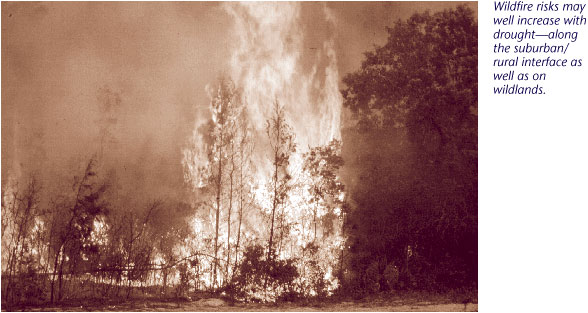|
|
| Return to Table of Contents |
 |
and parks or on vast expanses of agricultural land. The Agency noted that the number of requests it received from states for assistance with wildfire increased from an average of five to seven a year during most of the 1980s to 122 in 1998. We learned also that the Resource Conservation and Development Councils across the country are encouraging and assisting in the installation of "dry hydrants." These relatively inexpensive structures allow fire trucks to load water from ponds on cooperating farms during emergencies. Need for Training and Planning provides opportunities for the general public to become involved and invested in drought-related decisions—for example, adopting water conservation measures year round. Planning also gives people a chance to learn more about drought, leading to greater self-reliance and self-determination. And planning emphasizes local solutions based on consideration of all affected entities and related issues, including legal, economic, geographic, climate, religious, and cultural differences; fairness and equity; and environmental concerns. These opportunities are lost where people are not sufficiently trained to engage in drought planning or lack adequate technical assistance to do so. Hands-on training and technical assistance programs can help people formulate and implement plans to mitigate human and environmental impacts. Such programs can help farmers decide whether to include drought-resistant crops, on-farm wells, crop insurance, conservation systems, restoration of wetlands and wildlife habitat, and other important factors into their risk-management strategies. They can help farmers install water management practices and gain a basic understanding of the soils and climate conditions in their areas and the types of crops and plants suitable to those sometimes changing conditions. Such assistance can also help them understand complicated marketing options and other methods to manage risks. Training and technical
assistance programs can help communities as they determine their own
priorities for incorporating drought concerns and the need to protect
environmental resources into |
|
|
